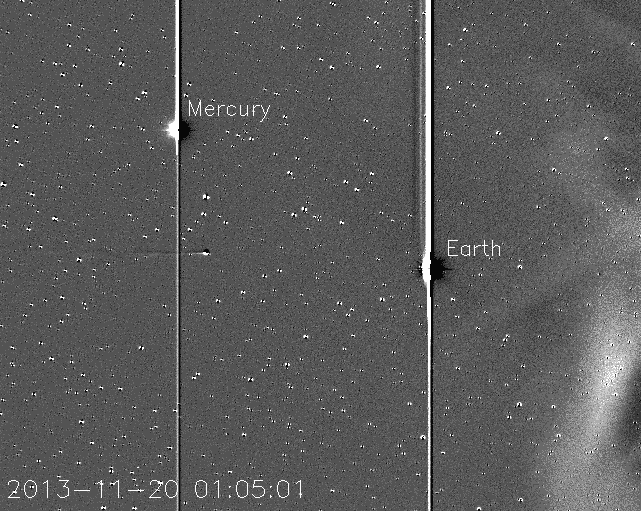UPDATE 12/4/13: Well, the human fangirl side of me is disappointed to announce that as of yesterday, NASA officially declared Comet ISON dead. But, the scientist in me is excited that there is so much data to pore over from the breakup of this comet very near the sun. With so many instruments following this comet, we have more capability now more than ever to view the makeup of this ancient comet, where it came from, and maybe will teach us more about comets in general. What a fascinating little comet, and even though I won’t be able to watch it selfishly in my night sky, I still feel very lucky to have been around to witness its demise.
Right now, there is a comet well on its way to the sun. Will it survive its journey, which has been millions of years in the making? And if it does, will we ever see it again?
Astronomers have been tracking comet ISON for quite a while now and many had predicted it would be one of the brightest observed comets for many years. While we haven’t seen the expected brightness from ISON yet, that may change if it survives its trip around the Sun.
We will find out this Thanksgiving. On a NASA audio press conference today, many astronomers were offering their “bets” as to whether comet ISON would survive, with many giving it a 30-40% chance of survival. This comet has been fascinating from a scientific standpoint – many scientists use the words “odd” and have said it has behaved quite strangely. Of course, that only piques scientific interest all the more.
It’s important to note at this point that you very likely won’t be able to see anything on Thanksgiving, what with the whole staring into the sun and all. I, for one, will be letting NASA’s instruments do the work for me. There are some great resources for watching Comet ISON online, including from NASA and the Bad Astronomer.
IF it survives — again, this is the big IF — it is expected to be visible again in the Northern Hemisphere around the 1st or 2nd week of December. Even more awesome – it will be visible during sunrise AND sunset (before it became too close to the Sun, it’s only been visible at sunrise). UPDATED: There is some confusion as to this point that was brought up during the press conference. I’ll continue to keep you updated.
Comets don’t come around very often. This is a great opportunity to gather your kids, friends, family, etc. and to use all the tools we have available to watch one of the best shows our universe has to offer. I know I’ll be watching–how about you?




